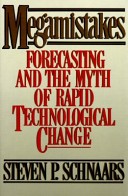Brilliant is the title of Jane Brox’ book on the history and evolution of artifical lighting, from the lamps that the cave painters at Lascaux used until today’s LED lighting.
“Brilliant” also is my summary of how Jane Brox accomplished her task.
She vividly describes each of the successive forms of lighting in the context of the societies of their times: the quality of the lamp light, the impact of the lamp on social life and the labor and cost to acquire the source for the lamp.
With great empathy, past civilizations and their use of artificial light are recalled.
I came to realize again that not just in ancient Rome, but also in renaissance Florence, the absence of streetlights meant that social life came to a halt after sunset.
The candle was the reference from around 20.000 BC to around 1800 AD, when gas lighting entered the stage. Less than a century later, electric lamps drove the electrification of the world: and once the infrastructure for distribution of electricity had been established, a flurry of electrical products followed.
And now, again one century later, the incandescant lamps we’ve all grown up with are faded out. The future is “cold light”, light that hardly generates heat as side effect, and not surprisingly is less dependent on the central electricity system its predecessor helped to establish.
That Jane Brox is able to tell the whole story in less than 400 pages means that she came well prepared: the storyline is very efficient, fact-based, and empathetic. I didn’t encounter one chapter that I felt like it could be skipped. On the contrary, especially the last chapters on environmental lighting and the new, smart, energy grid beg for more. That may be a nice subject for her next book.

